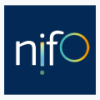As part of the National Interoperability Framework Observatory project, which is the European observatory of interoperability as well as a business intelligence centre producing reports on digital pubic administration, a comprehensive study is performed on an annual basis to examine the level of modernisation and digitalisation in Europe’s public administrations. This information is particularly useful to the European Commission Directorate-General for Informatics (DG DIGIT), and to its Interoperability Unit more specifically, in order to be informed about the key trends influencing the continuous digitalisation of public administrations throughout Europe. In parallel, the study also intends to develop recommendations and strategies that could help Member States and the European Commission in tackling common challenges related to digital government and interoperability.

The information reported in the study is drawn from an analysis of how the European Semester process, which is the cycle of EU economic and fiscal policy coordination established in 2010, addresses topics related to digital government. It particularly focuses on topics falling under the European Structural and Investment Funds’ (ESIF) Thematic Objective 2 (Enhancing access to, and use and quality of, information and communication technologies) and Thematic Objective 11 (Improving the efficiency of public administration), which are related to digital government and interoperability.
For the scope of this study, three sets of documents of the European Semester cycle are being monitored and analysed: the 2019 Country Specific Recommendations (CSRs), issued by the European Commission to address the main challenges and priorities in each country, the 2019 National Reform Programmes (NRPs) drafted by the Member States to address the CSRs, and ultimately the 2014-2020 Operational Programmes (OPs) which give an account of how Member States plan to use the EU funding programmes to further encourage the development of digital government in their respective countries.
Based on this qualitative analysis, the study provides a summary of every Member State’s state-of-play on digital government and interoperability. Compiled together, these summaries allow to give an overview of the main themes and latest developments in the area of digital government throughout the European Union. The main trends identified in this year’s report are an enhancement of eSkills in education and in the workplace, as well as further developments in the field of eHealth. In addition, Member States are also focused on designing and deploying reliable digital infrastructures linked to the Connecting Europe Facility (CEF) building blocks, such as eProcurement and eID.
Based on these findings, the report provides policy conclusions and recommendations to the European Commission and to DIGIT, in particular. These include for example, an increased support from the Interoperability Unit to the Member States in order to enhance their civil servants’ digital skills, so as to achieve better public services delivery in general (Recommendation #2) or the promotion of reusable solutions by the Interoperability Unit in order to support the digital transformation of a large number of businesses in the Member States, particularly the digitalisation of SMEs, which is a main new trend that arose following this year’s analysis (Recommendation #4).

